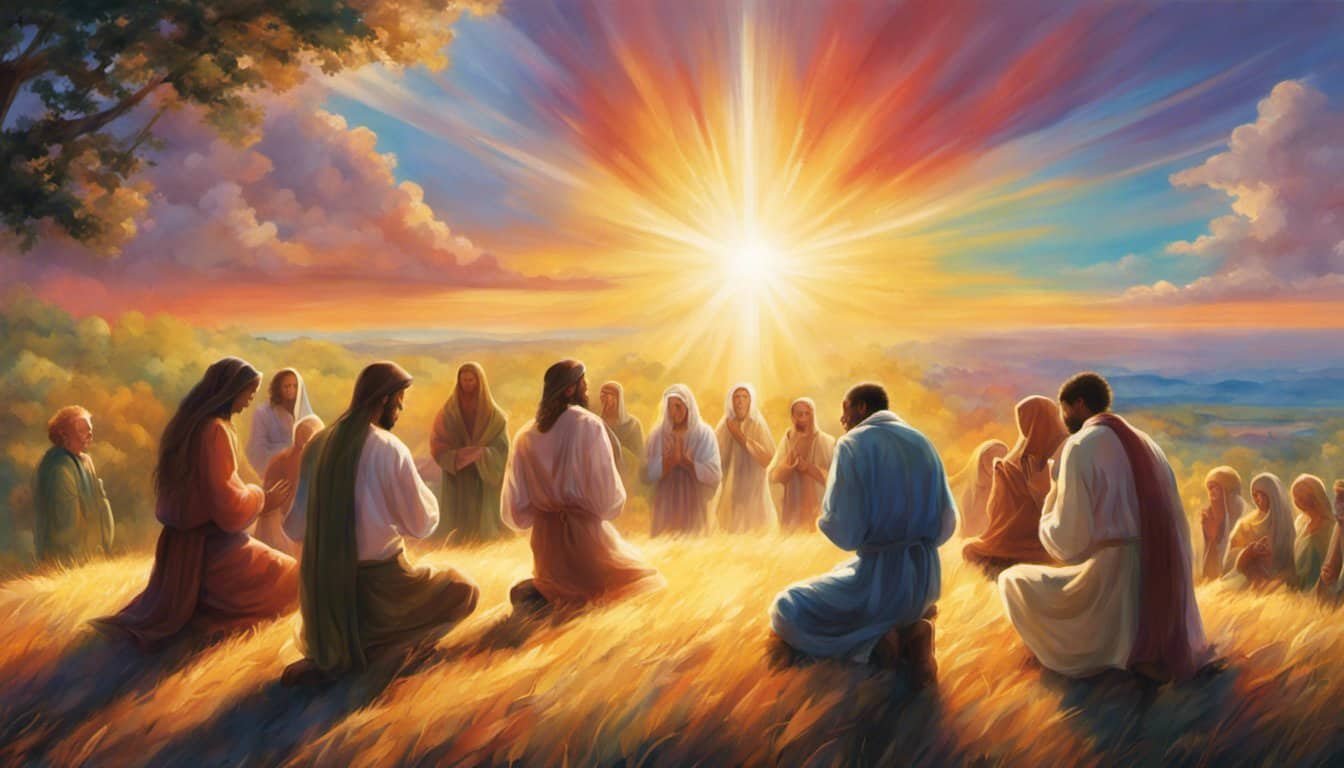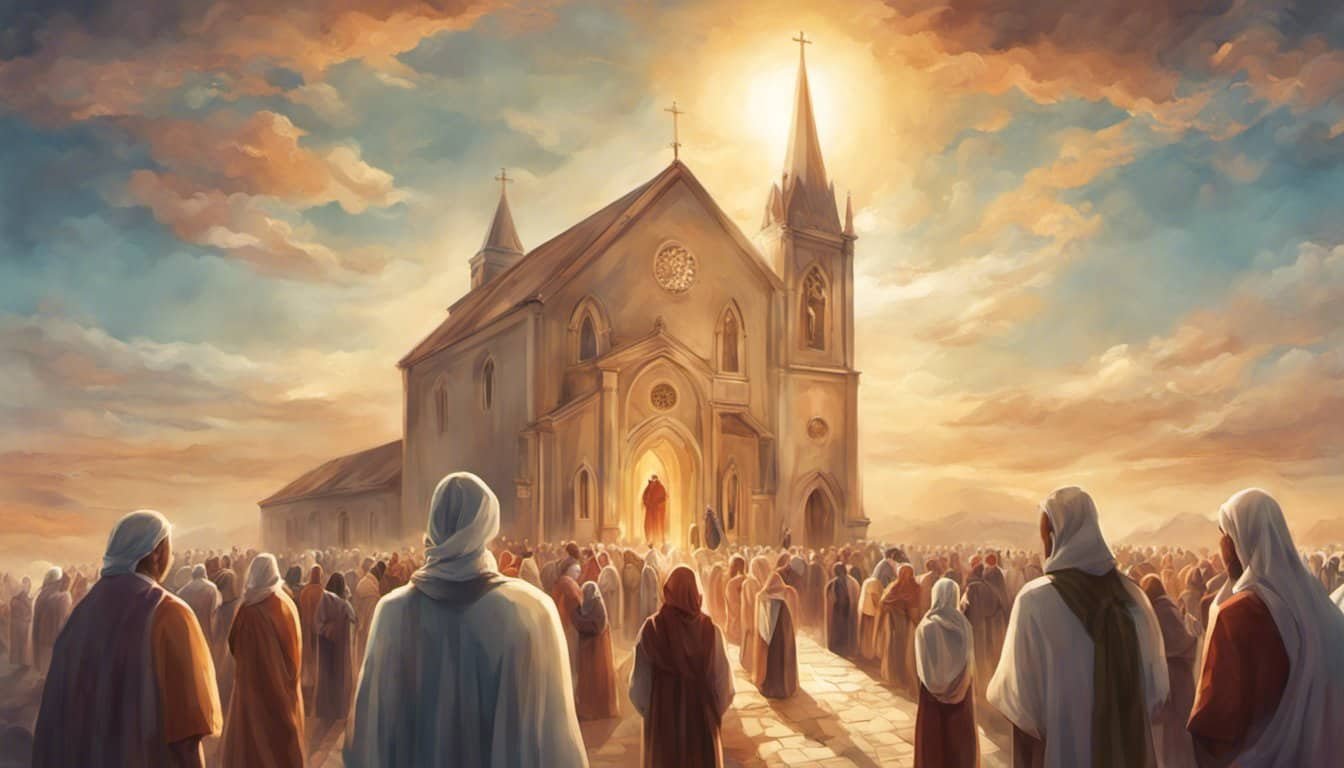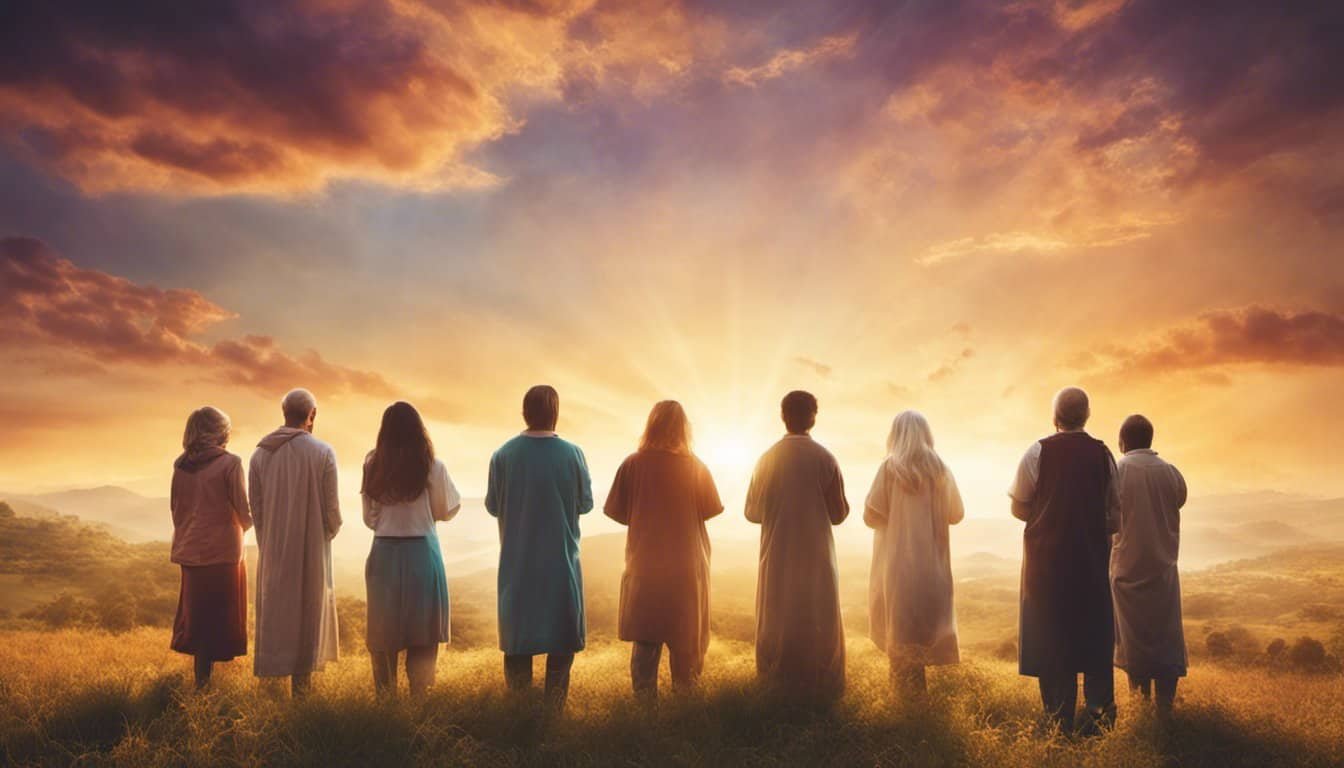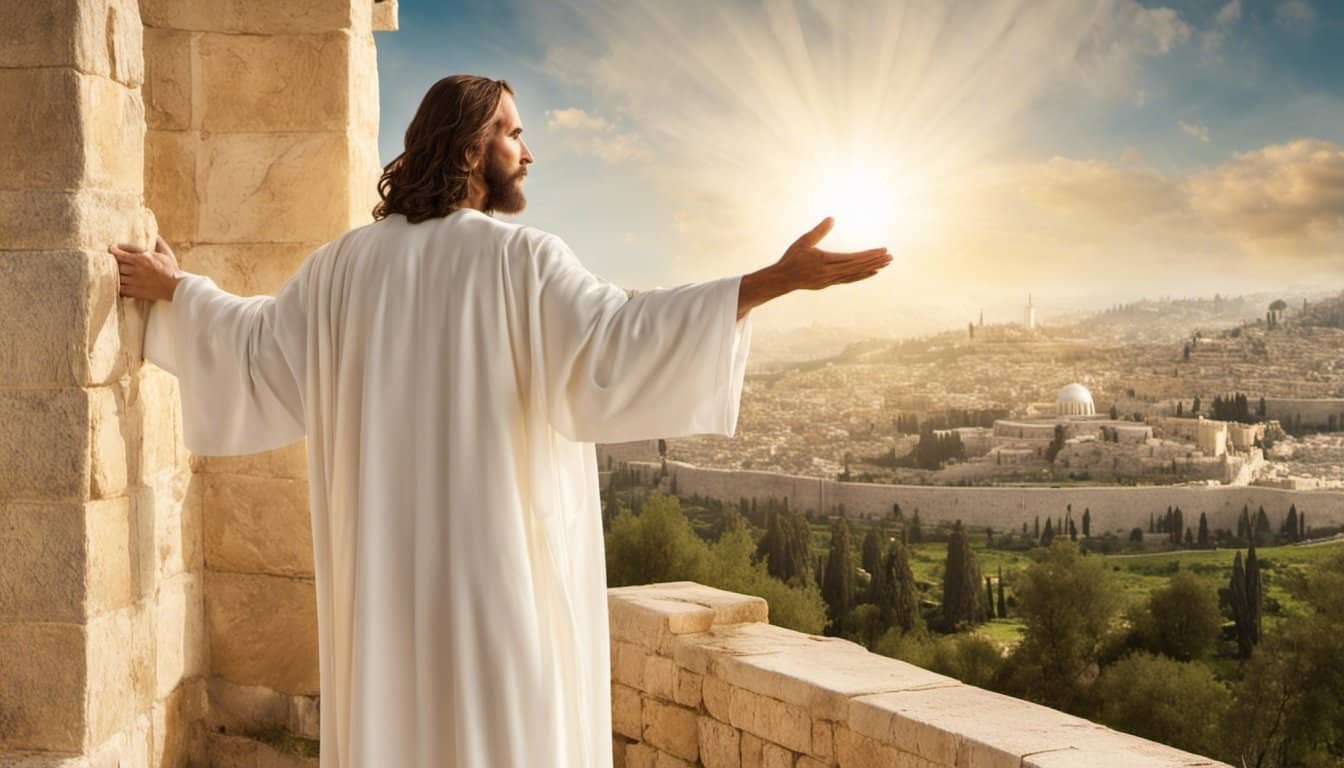The Lord’s Supper is more than just a ritual; it serves as a profound moment of remembrance and fellowship among believers. This sacrament allows individuals to reflect on Christ’s sacrifice while also fostering a sense of unity within the church community.
Many find deep spiritual nourishment in this practice, as it connects them to the past and strengthens their present faith.

As Christians gather around the table, they celebrate the bond they share in Christ through Communion. This sacred meal not only honors Jesus’s death and resurrection but also encourages personal and communal growth.

By participating, believers renew their commitment to each other and to their faith, creating a welcoming space for companionship and support.
Exploring the significance of the Lord’s Supper reveals layers of meaning that resonate deeply within the hearts of participants. This article seeks to delve into the richness of remembrance and fellowship, inviting readers to understand how this practice shapes their faith journey and community life.
Key Takeaways
- The Lord’s Supper symbolizes remembrance of Christ’s sacrifice.
- Communion fosters fellowship and unity among believers.
- Participation in this practice enhances spiritual and communal growth.
Historical Origins of the Lord’s Supper
The Lord’s Supper has deep roots that connect to ancient traditions and pivotal moments in Christianity. It began with the Jewish Passover and was established by Jesus Christ during His ministry. Understanding these origins reveals the significance of the meal as an act of remembrance and fellowship.
Roots in the Passover
The Lord’s Supper traces its origins to the Jewish Passover. This yearly feast commemorates the Exodus, when God freed the Israelites from slavery in Egypt.
During Passover, families shared a meal that included unleavened bread and wine.
The symbolism of the Passover meal is significant. The lamb sacrificed during this feast represented God’s protection and deliverance. Jesus drew upon this imagery when He spoke about His body and blood, indicating a new meaning for His followers.
The Passover meal established a context in which Jesus would later introduce the Lord’s Supper. It served as a foundation for understanding sacrifice, salvation, and community.
Establishment by Jesus Christ
Jesus Christ established the Lord’s Supper during the Last Supper with His disciples. According to the New Testament, He took bread, blessed it, and broke it, saying, “This is My body, given for you” (Luke 22:19). He then shared a cup, stating, “This is the new covenant in My blood” (Luke 22:20).
This moment was transformative. Jesus redefined the bread and wine as symbols of His sacrifice. He invited His followers to partake, reinforcing the idea of fellowship with Him and one another.

The Lord’s Supper became a celebration of the New Covenant. This covenant promised forgiveness and a close relationship with God. Through the act of sharing the meal, believers remember Christ’s sacrifice and the unity they share as His body.
Theological Significance
The Lord’s Supper holds deep theological meaning for believers. It reflects essential themes such as the symbolism of bread and wine, the significance of the covenant, and the concepts of sacrifice, grace, and salvation. Each element plays a crucial role in understanding the faith.
Symbolism of Bread and Wine
In the Lord’s Supper, bread symbolizes the Body of Christ. Its breaking signifies the sacrifice made for humanity’s sins. When believers partake in the bread, they acknowledge the physical suffering Jesus endured.
The wine represents the Blood of Christ. It serves as a reminder of the atoning sacrifice made on the cross. Drinking the wine symbolizes the acceptance of His grace and the new covenant established through His blood.
Covenant and Memorial
The Lord’s Supper acts as a memorial of Jesus’s sacrifice. Jesus instituted this practice during the Last Supper, calling it a time for remembrance. He emphasized the importance of eating and drinking in His name, reaffirming the commitment to the covenant between God and His people.
This covenant brings believers into a special relationship with God. It signifies forgiveness of sins and the promise of eternal life through faith in Christ. By practicing this ritual, they proclaim their faith, remembering not just His death, but the hope it brings.
Sacrifice and Atonement
The themes of sacrifice and atonement are central to the Lord’s Supper. Jesus’s death on the cross was the ultimate sacrifice, fulfilling the requirements of the Old Testament sacrificial system. The bread and wine serve as visible signs of this profound act.
When believers reflect on Jesus’s atoning sacrifice, they recognize the depth of God’s love. This love provides the way to salvation and reconciliation with God. They understand that through this act, sins are forgiven, and new life is found in Him.
Grace and Salvation
Grace is a cornerstone of the message during the Lord’s Supper. Believers receive not because of their own merit but as a gift from God. The act of communion reaffirms that grace is necessary for salvation.

In this sacred moment, they reflect on God’s unearned favor. They are reminded that their relationship with God is based on trust and faith in Christ’s sacrifice. The Lord’s Supper encourages them to live in gratitude, motivated by the grace they continually receive.
Spiritual and Communal Aspects
The Lord’s Supper is not just a ritual; it embodies deep spiritual and communal connections. Through this practice, believers experience fellowship with Christ and one another, while engaging in significant spiritual action and reflection.
Fellowship with Christ
When believers partake in the Lord’s Supper, they affirm their fellowship with Christ. This act symbolizes their unity with Him and His sacrifice. By recalling His body and blood, they deepen their spiritual relationship.
This moment offers a chance for participants to reflect on their lives. They can acknowledge their sins and receive forgiveness. As they invite the Holy Spirit to guide them, they experience renewal and grace.

Connecting with Christ transforms the ritual into a heartfelt experience. It reminds believers of their commitment and love for Him.
Fellowship with Believers
The Lord’s Supper nurtures a strong sense of community among believers. As they gather to share in this sacred act, they strengthen their bonds within the Body of Christ. This communal experience fosters unity and encourages love among participants.
During this time, individuals set aside personal differences. They come together in humility, celebrating their shared faith. This strengthens the community and builds lasting friendships.
The act of breaking bread cultivates a spirit of inclusion. Believers support one another and encourage deeper relationships while participating in the Lord’s Supper.
Spiritual Action and Reflection
The Lord’s Supper prompts spiritual action and reflection. Participants are called to examine their hearts and consider their relationship with Christ and others. This is a time for honest self-evaluation.

Believers are encouraged to actively participate, not just observe. Engaging in this way allows them to feel connected to the larger community. They should be mindful of their thoughts, attitudes, and actions.
Additionally, the Holy Spirit plays a vital role during this reflection. It fosters awareness and helps individuals grasp the significance of the moment, enriching the spiritual experience.
Practice and Observance
The practice of the Lord’s Supper is deeply rooted in Christian worship. It involves not only remembrance but also offers an opportunity for thanksgiving and hope. Understanding how often it is observed and its role in worship enhances its significance.
Frequency and Timing
Many churches celebrate the Lord’s Supper regularly. Commonly, this takes place on the first day of the week, aligning with traditions traced back to the Apostles. Some congregations choose to partake monthly, while others observe it every Sunday.

This frequency allows believers to reflect on Christ’s sacrifice consistently. Setting specific times creates a rhythm of worship that helps deepen faith. Observing the Supper at consistent intervals invites individuals to prepare their hearts and minds for meaningful participation.
The Role of Worship and Praise
The Lord’s Supper is an act of worship. During this time, worship and praise play essential roles. Singing hymns or spiritual songs often precedes the meal, setting a tone of reverence and joy.
This environment fosters a sense of community as believers come together in unity. Praise reinforces the message of hope found in Jesus’ death and resurrection. The shared experience enhances the collective remembrance, bringing both individual and group focus on God’s grace.
Thanksgiving and Hope
Thanksgiving is a central theme during the Lord’s Supper. Participants are encouraged to give thanks for Christ’s sacrifice and the blessings received through Him. Expressions of gratitude not only acknowledge personal faith but also unite the community in shared beliefs.
Additionally, the meal symbolizes hope for believers. It represents the promise of eternal life and reunion with Christ. This hopeful aspect strengthens faith, as individuals reflect on the future while remembering the past. Together, thanksgiving and hope create a powerful context for this sacred observance.
Personal and Corporate Responses

In the context of the Lord’s Supper, both personal and corporate responses play vital roles. These responses involve self-examination, acts of obedience, and expressions of love and sharing within the church community. Each facet encourages believers to live out their faith together.
Examination and Confession
Self-examination is crucial before participating in the Lord’s Supper. Individuals are encouraged to reflect on their relationship with God and others. This can involve considering personal sins and areas where forgiveness is needed.
Listing specific areas of concern helps in this process. For example:
- Attitudes: Is there anger or bitterness?
- Relationships: Are there unresolved conflicts with others?
- Faith: Is trust in God strong, or is doubt creeping in?
Confession follows examination. It allows believers to ask for forgiveness, restoring their relationship with God. This personal acknowledgment is a step toward healing and renewal, essential for a meaningful experience at the table.
Obedience and Service

Obedience to God is vital in the life of a believer. Engaging in the Lord’s Supper calls for a commitment to live according to His teachings. This involves serving others within the community.
Service can be expressed in many ways, such as:
- Volunteering at church events
- Helping those in need
- Supporting mission trips
When people actively participate in service, they reflect Christ’s love. Obedience and service go hand in hand, leading to deeper relationships with both God and the church community. Serving together fosters unity, making the experience of the Lord’s Supper even richer.
Love and Sharing
Love is at the heart of the Lord’s Supper. When believers gather, they share in Christ’s love, which encourages them to reach out to others.
This sharing can be both tangible and emotional.

Examples of love and sharing include:
- Bringing a dish to share during a fellowship meal
- Offering words of encouragement to fellow church members
- Providing resources for those facing hardships
Such actions are expressions of love that strengthen community bonds. They also reflect the forgiveness of sins, as individuals exhibit grace and compassion towards each other.
By emphasizing love and sharing, the Lord’s Supper becomes a powerful reminder of the unity believers have in Christ.
Contemporary Expressions and Debates
Today’s practice of the Lord’s Supper varies widely among different Christian traditions. Each community brings its unique understanding and style to this important sacrament.

This section discusses these expressions and the key debates surrounding the Lord’s Supper.
Variations in Christian Traditions
Different Christian groups observe the Lord’s Supper in various ways. For Catholics, it is known as the Eucharist, celebrated with a strong emphasis on the real presence of Christ in the bread and wine.
Protestants may view it as a symbolic act, focusing on remembrance.
Some denominations, like Lutherans, believe in a “sacramental union,” where Christ’s presence coexists with the elements. Other groups, especially Baptists, hold a memorial view, seeing the act as a way to recall Jesus’ sacrifice.
Each tradition shapes the member’s experience and understanding of the sacrament in their Christian life.
The Real Presence Debate
The question of Christ’s real presence during the Lord’s Supper is a significant debate. Some traditions, such as the Catholic Church, teach transubstantiation. This means that the bread and wine transform into the actual body and blood of Christ.
In contrast, many Reformed Christians emphasize a spiritual presence. They believe that while the elements remain bread and wine, Christ is present in a unique way when believers partake.
This debate highlights differences in theology and impacts how communities live out their faith through the sacrament.
Integrating into Modern Christian Life
In contemporary society, many seek ways to integrate the Lord’s Supper into their daily lives. Churches often look for innovative methods to engage members.
This includes community meals that combine fellowship with the sacrament. Some congregations encourage regular observance, making it a central part of their worship.
This helps individuals connect more deeply with their faith. Baptism is also often highlighted in tandem, as both are seen as vital actions in a believer’s spiritual journey.
By adapting these practices, congregations aim to foster community and deepen their members’ connections to Christ through the Lord’s Supper.













